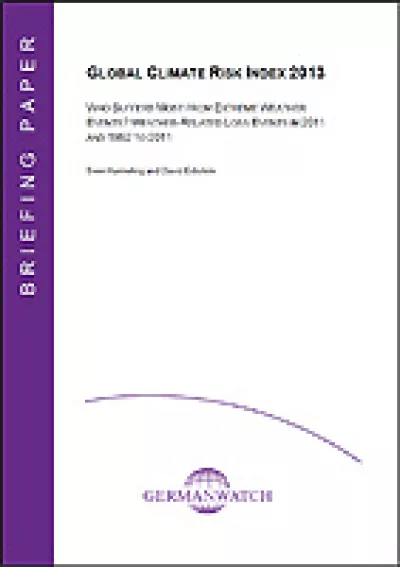Global Climate Risk Index 2013

The Global Climate Risk Index 2013 analyses to what extent countries have been affected by the impacts of weather-related loss events (storms, floods, heat waves etc.). The most recent available data from 2011 as well as for the period 1992-2011 were taken into account.
Most affected countries in 2011 were Thailand, Cambodia, Pakistan, El Salvador and the Philippines. For the period 1992 to 2011, Honduras, Myanmar and Nicaragua rank highest.
This year's 8th edition of the analysis reconfirms that less developed countries are generally more affected than industrialised countries, according to the Climate Risk Index. With regard to future climate change, the Climate Risk Index can serve as a warning signal indicating past vulnerability which may further increase in regions where extreme events will become more frequent or more severe through climate change. While some vulnerable developing countries are frequently hit by extreme events, there are also some where such disasters are a rarity.
COP 18 held in Doha, Qatar, provides a decisive moment and should deliver a turning point by which the international community now starts scaling-up the international response to addressing climate change and its increasing loss and damage. The time window for putting the world on a track to stay below 2°C is closing rapidly, and Doha should insert new dynamics.
| Autor:innen | Sven Harmeling and David Eckstein |
|---|---|
| Publikationsdatum | |
| Seitenanzahl | 28 |
| Publikationstyp | Klima-Risiko-Index, Indizes, Climate Risk Index
|
| Bestellnummer | 13-2-03e |
| ISBN | 978-3-943704-04-4 |
| Schutzgebühr | 5.00 EUR |



